They’re great for the environment, but not your home. Don’t miss these early signs of a bat infestation.
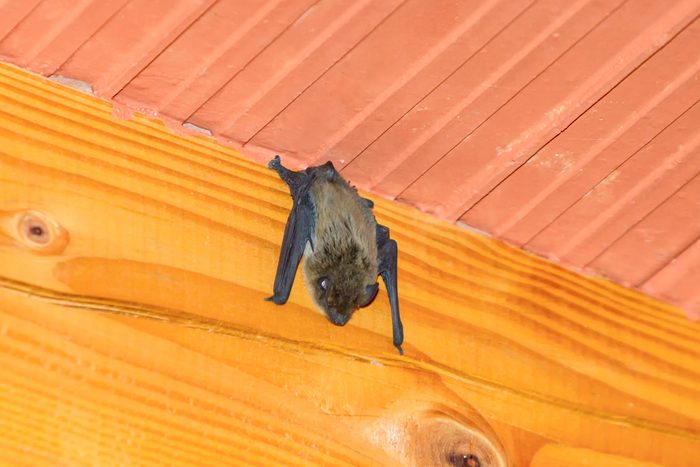
6 Clear Signs Your House Has a Bat Infestation

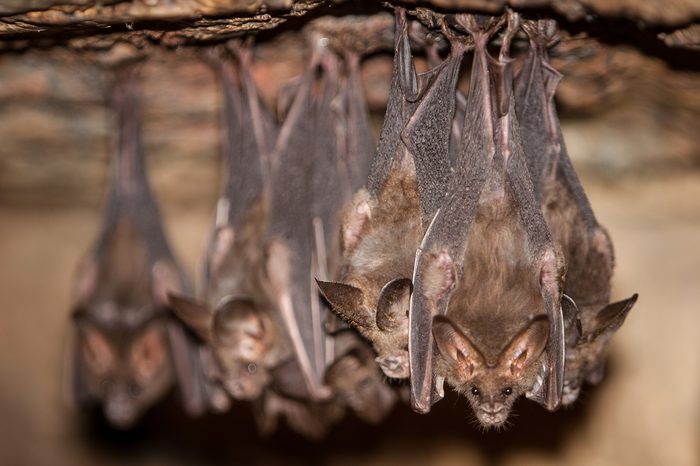
Flapping and scratching sounds
Ben Sciortino, owner and president of Tri-S Pest Control Service, says that a lot of homeowners think the odd noises coming from the attic are coming from mice or rats, but when they listen a little closer, they hear flapping of wings and scratching sounds, indicative of a bat infestation. “This is particularly common during dusk and dawn, when the bats are coming and going. Think of them as having rush hour, no different from [what] you and I have. However, their shift is nocturnal and the highway is your house,” says Sciortino.

Guano droppings
Bat guano looks like tiny, elongated black pellets. It’s actually used as fertilizer because it’s rich in phosphorus and nitrogen, but it isn’t something you want to accumulate inside your home. You’ll find piles of it scattered within the walls of the attic or insulation under bat roosts if you’ve got a bat infestation. And it can really pile up quickly.
“If you come across guano in the attic, look up, and I bet you’ll see other evidence of bats,” says Sciortino. Guano turns to a fine dust as it ages, so you’ll probably want to leave the guano cleanup to a pro with the proper protective clothing and equipment.
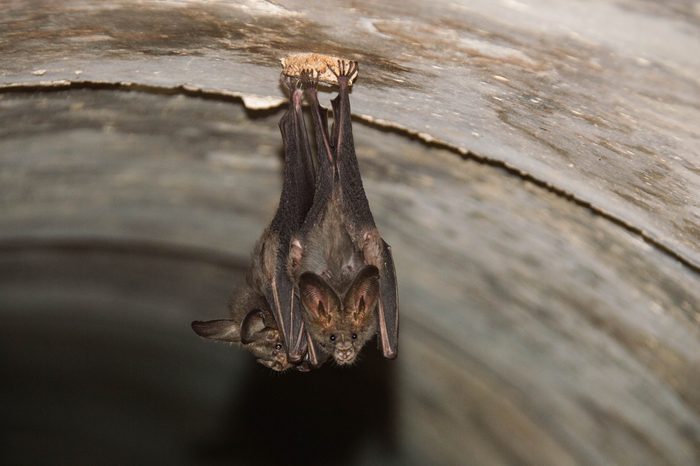
A strong ammonia odor
“Some homeowners never see the guano, but they smell something that’s as foul as ever,” says Sciortino. Ammonia from bat urine emits a very strong odor once there’s an infestation, and it smells just like a urine-soaked cat litter box. In some cases, you’ll spot urine trails on the walls or rafters in the attic.
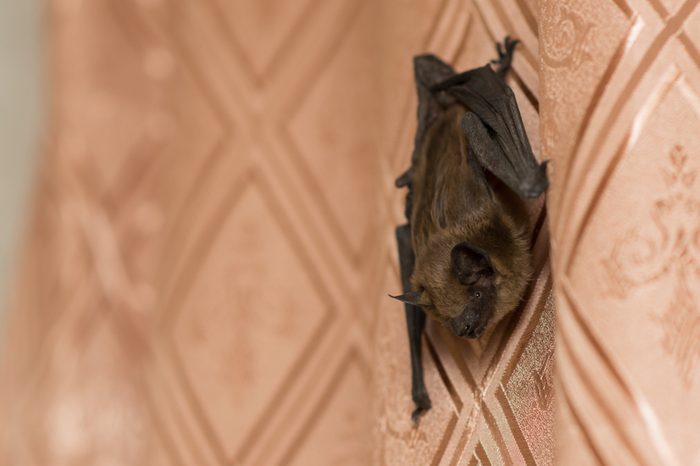
Grease marks
Bats aren’t the cleanest critters around. They have a dirty, greasy film on their coats. “If you see a dark-brown or even charcoal-gray residue on a hole near your attic, it’s a safe bet to assume you have bats,” says Sciortino. “Upon entering a home, they usually enter through a point that’s small, so they have to squeeze through it. During the process, this oil comes off, and after repeated entries and exits, the buildup will be obvious,” notes Sciortino.

Night flights
Bats are nocturnal and will roost quite happily in a cozy attic, resting up to catch their nightly feast of insects. It’s not uncommon to see a bat or two at dusk, but if you see several and notice other signs, such as grease stains by points of entry like the windows, vents and shutters of your attic, you could have a bat hotel open for business right above your nose.
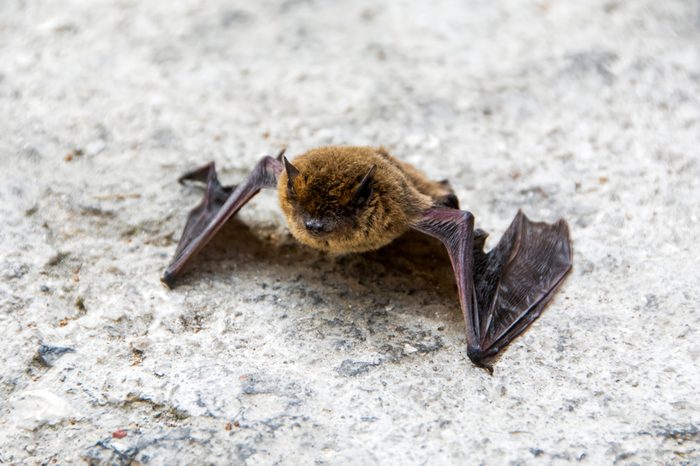
High-pitched squeaks
Bats use a high frequency to communicate that most humans usually can’t hear when bats are outside. But it is possible to hear a “colony” of bats being emitted from the attic. “Depending on how many bats you have in the attic, you could hear them communicating, but it depends on your hearing and how many are contributing,” says Sciortino. “Those who can hear them say it’s a mixture of chirping and squeaking. It’s quite faint, but if you have dozens in your attic, each little contribution could snowball into a more noticeable and annoying clue of an infestation.”
Bats have their place in our ecosystem, but not in our attics. If you notice any of the signs of bat infestation mentioned above, your first step is to call a pest-control company for an assessment. The pros will humanely remove the bats from the attic and seal it to protect against future infestations.
“Bats are extremely territorial, so getting the area assessed by a professional will ensure the bats leave and can’t get back in,” says Pelshaw. “Also, keeping up with preventative maintenance after the exclusion is extremely important to ensure the bats do not find another way in.”
FAQs
Does a bat infestation put me at risk for rabies?
Contrary to popular belief, bats aren’t purposely aggressive or out to bite you. And according to the United States Geological Survey, less than 1% of bats have rabies.
Still, that doesn’t mean it’s a good idea to touch or pick up a bat with your bare hands, go near a nest of bat pups or even let a bat infestation in your home go unchecked. In the unlikely event of a bite, wash the site thoroughly with soap and water and seek medical attention at once. And if you sense signs of a bat infestation, calling the pros is the way to go.
What are the other risks of a bat infestation?
“Bat guano (poo) carries fungal spores that can cause a lung disease known as histoplasmosis,” says Pelshaw. This fungal infection comes from breathing in airborne spores, often found in areas where bats roost—like attics. Most people don’t get sick from exposure, according to the Centers for Disease Control and Prevention, but for some, especially infants or those with weakened immune systems, the illness can be serious.
“If a bat infestation is not taken care of, guano will build up in the attic and can cause the people living in the home to become ill,” he warns. If you’re spotting droppings, that could be your biggest clue.
About the experts
|
Why trust us
At Reader’s Digest, we’re committed to producing high-quality content by writers with expertise and experience in their field in consultation with relevant, qualified experts. We rely on reputable primary sources, including government and professional organizations and academic institutions as well as our writers’ personal experiences where appropriate. We verify all facts and data, back them with credible sourcing and revisit them over time to ensure they remain accurate and up to date. Read more about our team, our contributors and our editorial policies.
Sources:
- Ron Pelshaw, president of My Bat Guy
- Ben Sciortino, owner and president of Tri-S Pest Control Service
- United States Geological Survey: “Are bats dangerous?”
- Centers for Disease Control and Prevention: “About Histoplasmosis”



















